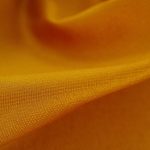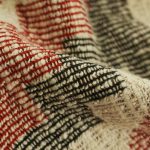When temperatures drop below freezing, choosing the right fabric can make all the difference in your comfort and warmth. You might be surprised to learn that not all materials are created equal for extreme cold. From natural fibers to advanced synthetics, each option has its unique benefits. So, what should you consider when selecting your cold-weather gear? Let’s explore the top contenders that can keep you warm and dry in sub-zero conditions.
Table of Contents
Key Takeaways
- Wool and Merino Wool: Excellent natural insulators that trap air, wick moisture, and maintain warmth even in cold conditions.
- Down Insulation: Lightweight and compressible, providing exceptional warmth-to-weight ratio, but caution is needed in damp conditions.
- Synthetic Insulation: Retains warmth when wet, making it ideal for unpredictable weather and sub-zero adventures.
- Fleece Fabrics: Lightweight, breathable, and quick-drying, perfect for layering and maintaining warmth without bulk.
- Gore-Tex: Provides waterproofing and breathability, essential for comfort in extreme cold and wet conditions.
Wool: Natural Insulation and Moisture Management
When it comes to battling sub-zero temperatures, wool stands out as one of the best natural insulators you can choose. Its unique structure traps air, creating a barrier against the cold.
When you wear wool, you’re not just staying warm; you’re also benefiting from its moisture-wicking properties. This means that if you sweat, wool pulls moisture away from your skin, keeping you dry and comfortable.
Unlike synthetic options, wool can absorb a significant amount of moisture without feeling wet, which helps regulate your body temperature. Plus, it’s naturally odor-resistant, so you won’t have to worry about unpleasant smells during extended wear.
Choosing wool for your cold-weather wardrobe guarantees you’re equipped to handle even the harshest conditions.
Down: The Ultimate Warmth-to-Weight Champion
Down insulation is celebrated as the ultimate warmth-to-weight champion for a reason. Its unique structure traps air, providing incredible insulation without adding bulk.
Down insulation is the lightweight champion of warmth, trapping air for exceptional insulation without the extra bulk.
When you’re out in sub-zero temperatures, this lightweight material keeps you warm and cozy, so you can focus on enjoying the outdoors. You’ll notice that down jackets and sleeping bags compress easily, making them perfect for packing.
One of the best things about down is its breathability, allowing moisture to escape while keeping you warm.
However, be mindful of wet conditions, as down loses its insulating properties when damp.
Synthetic Insulation: Versatility and Performance
While down insulation is often praised for its warmth, synthetic insulation offers a versatile alternative that performs exceptionally well in a variety of conditions. You’ll find synthetic materials are lightweight, quick-drying, and retain warmth even when wet. This makes them ideal for unpredictable weather. Plus, they’re often more affordable and easier to care for than down.
| Feature | Synthetic Insulation |
|---|---|
| Warmth | High |
| Weight | Light |
| Water Resistance | Excellent |
| Drying Speed | Fast |
| Cost | More Affordable |
With these benefits, synthetic insulation serves as a reliable choice for your sub-zero adventures, ensuring you stay warm and comfortable without the hassle.
Fleece: Lightweight Layering Essential
When you’re braving sub-zero temperatures, fleece is your go-to for lightweight warmth.
Its breathable fabric makes it perfect for layering, allowing you to stay comfortable without bulk.
You’ll appreciate how easily it fits into your outdoor wardrobe, keeping you cozy on the coldest days.
Lightweight and Breathable Benefits
How can you stay warm without feeling weighed down? With fleece, you can enjoy the perfect balance of warmth and breathability.
This lightweight fabric traps heat while allowing moisture to escape, so you won’t feel clammy during outdoor activities. Fleece layers are ideal for active pursuits because they provide insulation without bulk, letting you move freely.
You’ll appreciate how soft and comfortable fleece feels against your skin, reducing the itchiness associated with other materials. Plus, it dries quickly, so if you sweat or encounter moisture, you won’t stay damp for long.
With fleece, you can focus on enjoying your winter adventures rather than worrying about your comfort. Choose fleece, and stay warm and agile in sub-zero temperatures!
Ideal for Layering Systems
Fleece isn’t just great for keeping warm; it’s also a key player in layering systems. When you’re gearing up for sub-zero temperatures, incorporating fleece into your outfit makes a huge difference.
Here’s why it’s essential:
- Insulation: Fleece traps heat effectively, providing a warm barrier against the cold.
- Moisture Management: It wicks sweat away from your body, keeping you dry and comfortable during outdoor activities.
- Versatility: Fleece layers can easily be added or removed, allowing you to adapt to changing temperatures throughout the day.
Flannel: Comfort and Heat Retention
Flannel offers a perfect blend of comfort and heat retention, making it an ideal choice for sub-zero temperatures.
When you wrap yourself in flannel, you’ll notice its soft texture providing warmth without feeling bulky. This fabric traps heat efficiently, keeping you cozy even in the harshest conditions.
Its breathable nature guarantees that moisture doesn’t linger, so you stay dry and comfortable throughout the day. You can easily layer flannel shirts or pajamas under your outerwear, enhancing your insulation without sacrificing comfort.
Plus, flannel’s versatility means you can wear it for various activities, from lounging at home to outdoor adventures.
Choose flannel, and you’ll enjoy warmth and comfort that keeps the chill at bay.
Gore-Tex: Waterproofing Meets Breathability
When you’re facing sub-zero temperatures, Gore-Tex offers an impressive balance of waterproofing and breathability.
This fabric keeps moisture out while allowing sweat to escape, ensuring you stay dry and comfortable.
Understanding how this technology works can make all the difference in extreme conditions.
Waterproof Performance Explained
Gore-Tex stands out as a revolutionary fabric that brilliantly combines waterproofing with breathability, making it ideal for sub-zero conditions.
When you choose Gore-Tex, you’re investing in a material that excels in the following areas:
- Waterproof Barrier: Its unique membrane blocks water droplets while allowing moisture vapor to escape, keeping you dry.
- Durability: Gore-Tex is engineered to withstand harsh weather and rugged use, ensuring long-lasting performance in extreme conditions.
- Versatility: Whether you’re skiing, hiking, or snowboarding, this fabric adapts to various activities, providing the protection you need without sacrificing comfort.
With Gore-Tex, you can confidently face the elements, knowing you’re equipped with a top-tier waterproof solution for your sub-zero adventures.
Breathability in Extreme Conditions
While facing extreme temperatures, staying dry is only part of the equation; you also need a fabric that breathes effectively.
Gore-Tex is an excellent choice, as it combines waterproofing with breathability, allowing moisture to escape without letting water in. This balance is essential during high-intensity activities in sub-zero conditions.
If you’re sweating underneath, trapped moisture can chill you quickly, negating the warmth of your insulation. Gore-Tex’s microporous structure lets water vapor escape, keeping you comfortable and dry.
Whether you’re skiing, hiking, or simply braving the cold, look for garments that feature this technology.
With the right gear, you’ll maintain ideal body temperature and stay focused on your adventure, rather than battling the elements.
Durability: Long-lasting Fabric Options
Choosing durable fabrics for sub-zero temperatures is essential, especially if you want your gear to withstand harsh conditions.
You need to focus on materials that can endure wear and tear while keeping you warm. Here are three long-lasting fabric options to evaluate:
- Gore-Tex: This waterproof and breathable fabric is perfect for extreme weather, resisting both water and wind.
- Cordura: Known for its high abrasion resistance, Cordura is ideal for rugged outdoor gear that needs to last.
- Tough Wool: Natural wool isn’t only warm but also resilient, offering durability and moisture-wicking properties.
Lightweight Fabrics: Ideal for Layering
When it comes to staying warm in sub-zero temperatures, lightweight fabrics are your best bet for layering effectively. These materials trap heat without adding bulk, allowing you to move freely while staying cozy. Fabrics like merino wool and polyester blends excel in this area, providing warmth without weighing you down.
Here’s a quick comparison of some popular lightweight fabrics:
| Fabric Type | Benefits |
|---|---|
| Merino Wool | Warmth & moisture-wicking |
| Polyester | Quick-drying & durable |
| Nylon | Lightweight & strong |
| Fleece | Soft & insulating |
| Silk | Lightweight & breathable |
Eco-Friendly Choices: Sustainable Fabric Options
As you prepare for sub-zero adventures, opting for eco-friendly fabrics not only keeps you warm but also supports sustainability.
Choosing materials that minimize environmental impact guarantees you’re making a responsible choice while enjoying the great outdoors.
Here are three sustainable fabric options to take into account:
- Organic Cotton: Grown without harmful pesticides, it’s breathable and offers warmth without harming the planet.
- Recycled Polyester: Made from post-consumer plastic, it reduces waste and retains insulating properties, perfect for cold weather.
- Merino Wool: Sourced from ethically raised sheep, it’s biodegradable, moisture-wicking, and provides excellent insulation.
Specialized Applications: Fabrics for Extreme Conditions
Whether you’re scaling icy peaks or braving frigid winds, selecting the right fabrics for extreme conditions is essential for your safety and comfort. You’ll want materials that offer insulation, moisture-wicking, and durability. Here’s a quick reference guide to help you choose:
| Fabric Type | Key Properties |
|---|---|
| Gore-Tex | Waterproof, breathable |
| Merino Wool | Insulating, moisture-wicking |
| Thinsulate | Lightweight, thermal |
| Fleece | Soft, warm, quick-drying |
| Kevlar | Cut-resistant, durable |
Frequently Asked Questions
How Do I Care for Fabrics Used in Sub-Zero Conditions?
To care for fabrics used in extreme cold, wash them gently, avoid fabric softeners, and air dry whenever possible. Store in a cool, dry place to maintain their performance and durability for future use.
Can I Combine Different Fabrics for Better Insulation?
You might worry combining fabrics will lead to bulkiness, but layering different materials can actually enhance insulation. Mixing breathable base layers with thicker outer fabrics gives you warmth without sacrificing comfort or mobility.
What Is the Best Fabric for Extreme Wind Resistance?
For extreme wind resistance, you’ll want fabrics like Gore-Tex or tightly woven nylon. These materials block wind effectively, keeping you warm and comfortable. Always check for breathability to guarantee you stay dry during active use.
Are There Any Allergies Associated With Down Insulation?
About 10% of people are allergic to down insulation. If you’re sensitive, you might experience respiratory issues or skin irritation. Consider synthetic alternatives that mimic down without triggering allergies for your next insulation choice.
How Do Temperature Fluctuations Affect Fabric Performance?
Temperature fluctuations can cause fabrics to expand and contract, affecting their fit and insulation properties. You’ll notice that some materials may become less effective at trapping heat or wick moisture during these changes. Keep this in mind.
- Does Chiffon Fabric Stink - July 15, 2025
- Does Chiffon Fabric Affect the Economy - July 15, 2025
- Does Cotton Fabric Have a Nap - July 15, 2025







